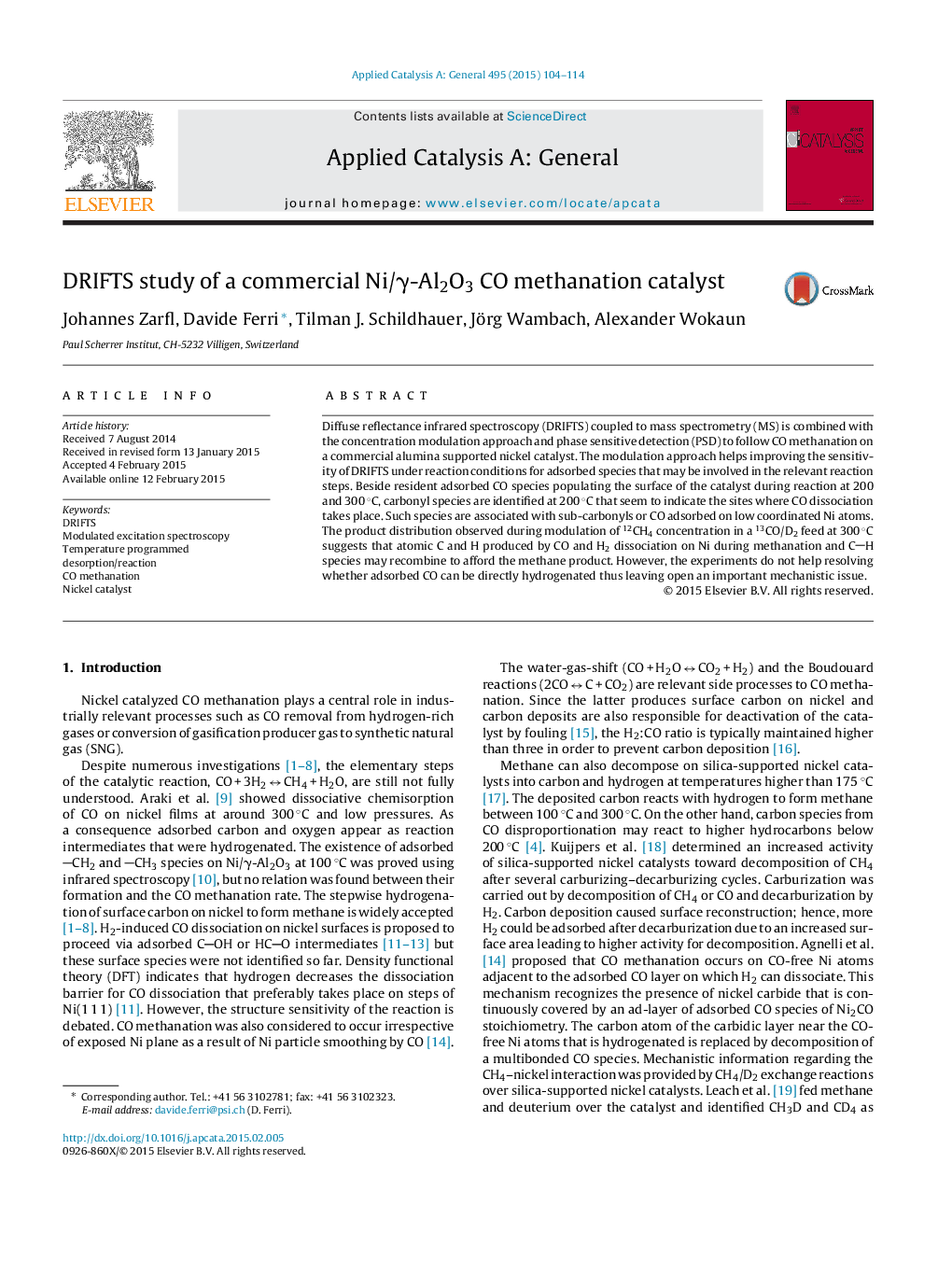| Article ID | Journal | Published Year | Pages | File Type |
|---|---|---|---|---|
| 39306 | Applied Catalysis A: General | 2015 | 11 Pages |
•Investigation of a commercial nickel catalyst using concentration modulation DRIFTS.•Sensitivity enhancement of the IR-data due to phase sensitive detection.•Identification of nickel sites where CO is dissociated.•Products distribution suggests C, H and CH species may recombine on Ni.
Diffuse reflectance infrared spectroscopy (DRIFTS) coupled to mass spectrometry (MS) is combined with the concentration modulation approach and phase sensitive detection (PSD) to follow CO methanation on a commercial alumina supported nickel catalyst. The modulation approach helps improving the sensitivity of DRIFTS under reaction conditions for adsorbed species that may be involved in the relevant reaction steps. Beside resident adsorbed CO species populating the surface of the catalyst during reaction at 200 and 300 °C, carbonyl species are identified at 200 °C that seem to indicate the sites where CO dissociation takes place. Such species are associated with sub-carbonyls or CO adsorbed on low coordinated Ni atoms. The product distribution observed during modulation of 12CH4 concentration in a 13CO/D2 feed at 300 °C suggests that atomic C and H produced by CO and H2 dissociation on Ni during methanation and CH species may recombine to afford the methane product. However, the experiments do not help resolving whether adsorbed CO can be directly hydrogenated thus leaving open an important mechanistic issue.
Graphical abstractFigure optionsDownload full-size imageDownload high-quality image (136 K)Download as PowerPoint slide
